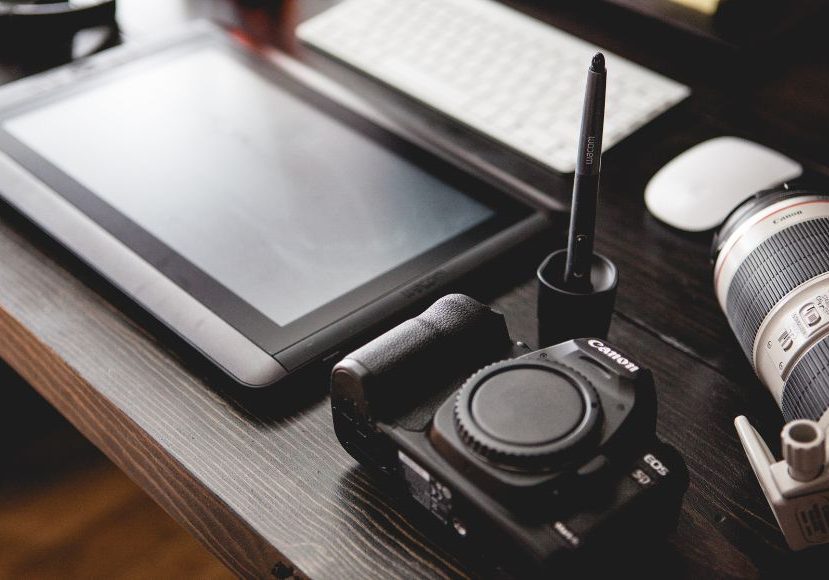
Photo Licensing: How to License an Image in 2024
Explore the intricacies of photo licensing, understanding rights, usage terms, and how to protect and monetize your photography effectively.
Business Guides | Learn | By Tammy Danan
Shotkit may earn a commission on affiliate links. Learn more.
Drafting licensing agreements is essential to all photographers.
As you work hard to create beautiful photographs, you deserve to earn well from it.
This is what this photo licensing guide is about – to help photographers get paid properly and have control over the dissemination of their photos.
As a photographer, I have learned it the hard way, seeing others benefit from my work and earning nothing.
Whether you are an aspiring photographer or a long-time photographer who wants to learn more about minimum license fees, royalty-free setup, and other photo licensing options, this article will guide you on the ins and outs of photo licensing agreements and how to create one.
What is Photo Licensing?

Image credit: Unsplash
This may not be an exciting topic, but it is crucial for anyone who uses photos in their business.
Photo licensing is an agreement or a written contract that protects both the photographer’s and the client’s rights.
It details the usage of certain images, when they will be used, and the main purpose.
It doesn’t just help photographers generate income or control the use of their photos but also secures copyright protection.
Photo licensing might look laborious, but it will save you a lot of headaches in the future.
Basics of image licensing
Photographers have creative rights to their images but can permit others to use them.
Having sole ownership of their works, they can create guidelines and conditions through an image licensing agreement outlining their work’s use.
When both parties agree, the client pays for a license to have the right to use a photo without directly owning these images.
Usually, the contract includes specifics on what the client will do with the image until he can use it and other further responsibilities, like not freely distributing the image to other parties.
Suppose a client submits under an image licensing agreement. In that case, they are honoring your rights as a photographer and acknowledging that their usage has limitations based on your agreed contract and price.
This ensures the creative artist is fairly paid and will not be surprised to see his work being used on other agendas.
Types of licenses
So, what are the various types of licenses? And how do you know which one fits your needs?
Royalty-Free (RF)
Royalty-free licenses are usually a one-time payment image license agreement that allows the purchaser or the client to use the image indefinitely based on the agreed contract.
Renewal of the contract is unnecessary, but doesn’t mean this is copyright-free.
How Much Do You REALLY Know About Photography?! 🤔
Test your photography knowledge with this quick quiz!
See how much you really know about photography...

Copyright still applies, and you, as the author of the photo, just permit the usage of his intellectual property.
Ownership is still on the photographer.
Rights-Managed (RM)
Rights-managed licensed images are images that other businesses can’t use once one business or client has locked a contract,
Meaning, if you have a rights-managed license agreement with a photographer for, say 5 photos, you’re the only client who can use those photos during the specified time in the contract.
The client is also allowed to use the photo multiple times as long as it serves the same purpose detailed in the agreement.
An example is when the client uses the photo in their brochures but is not allowed to use it on the website.
A new image license agreement is needed if the client wishes to use it for another platform.
Unlimited Use
This doesn’t mean that the usage of a certain photograph will be infinite or “unlimited.”
This only implies that the usage has no limitations regarding geographic scope or platform.
This means the client can use a certain image in their digital presence and even print.
Creative Commons (CC)
This image licensing is more flexible than other types. This is when the author of the photos permits clients to use his images for free but retains his rights to control his work.
Usually, photographers are given proper attribution when using their work, and this image licensing is strictly not for profit gain.
Editorial
Editorial licensing means a certain photo is allowed to be used only for an event, documentary, journalism, or educational purposes.
Photos are strictly not allowed to be used for advertisements that might gain profit for the client.
Licensed images are expected to appear only in newspapers, textbooks, news articles, or travel pieces.
Commercial
This image licensing type is agreed upon by an artist or a client, whether an individual or company, mainly for profit gain.
This has a strict timeframe of usage indicated on the contract, and while the client is free to use the image for income generation, the ownership remains with the photographer.
This is unless the photographer sells the copyright to his client, which is rare to happen.
Retail
This type of licensing is very uncommon.
Clients acquire the photos on a commission basis and can use them for personal use only, like for blogs or websites, but the copyright remains in the hands of the photo’s author.
What about exclusivity?
Exclusivity only applies to the Rights-Managed license model.
It is when the photographer offers a license for a certain photo and ensures no other buyer can use that same photo with the same rights.
This image licensing is more costly than others as the photographer locks in the rights to the purchaser to use the image.
This cannot be applied to Royalty-Free (RF) licensing agreements because the artist or photographer can’t ensure that other parties won’t use the same image.
Exclusivity is pretty much the opposite of a Creative Commons license, which is usually applied to images seen in magazines, book covers, advertising, commercials, and the like.
Licensing Mishap
Some years ago, documentary photographer Carol Highsmith made the news when she filed a $1 billion copyright lawsuit against stock photography site Getty for using 18,755 of her images.
She discovered that Getty was licensing some of her public domain images, which prompted her to file a lawsuit, claiming gross misuse and false attribution.
After months, the district court dismissed all of Highsmith’s federal copyright claims.
Mishaps and legal disputes like this can be avoided when you understand the ins and outs of photo licensing and make an effort to secure and protect your images.
Why License Your Photos?

Unsplash
Licensing agreements protect a photographer’s intellectual property. It will give you control over your work and empower you to create mutually beneficial agreements.
It will build your reputation as a photographer more than generating proper income. Through this, you will be able to build a culture of professionalism and respect in the photography world.
Protecting your work
Protecting your work is one of the main reasons to license your images, and it happens when you establish a clear term and usage for a client.
Image licensing protects your work from being overused, modified, and owned without your consent.
Monetizing your skill
Image licensing can open doors for photographers to produce wealth by charging fees and accepting royalties from clients. You can set a minimum license fee, depending on your business setup.
You can also upload your works on a stock photography site, become a contributor, and earn commissions.
Building a brand
An image licensing agreement can also help build your brand and identity.
A strong reputation in the photography industry will help you earn respect from people and increase your revenue.
Control and recognition
Image licensing will help you have a hand in your work. You’ll be able to monitor where, when, and how your images are being used.
You can customize your guidelines so that you will be fairly paid and recognized.
Image licensing is a professional act of protecting your work and providing the best service possible.
Who Needs to License Photos?
Though not all prefer to license their images, many photographers inclined to marketing, commercial, editorial, or any public platform maximize image licensing for their benefit.
Here are a few reasons why this is important, depending on your expertise level and your desire to build a profitable business.
Beginners
Building a portfolio at the start of your career might be challenging, but with the help of image licensing, you’ll create a space for yourself in the industry.
As a beginner photographer, learning the ins and outs of an image license can help in your portfolio-building. You can reach out to image agencies or study licensing and take a DIY approach. The following are some of the reasons why is it important as you begin your career:
Legal Protection – Image licensing can protect your creative property, control your work, and help you avoid unauthorized use of your images.
Network Connections – it can also help you gain more connections and clients. Clients usually work with people with professional work ethics and respect the legality of partnerships. Maximizing network connections can bring can help make up your portfolio.
Income Generation – As you cater to more clients by offering an image license to individuals and companies, you will be able to generate income that can even help in the expansion of your portfolio.
Work Improvement – Part of growing your photography business is receiving feedback. This conversation usually happens when there is also a conversation about licensing and taking things more professionally.
Mid-level photographer
As a mid-level photographer, here are the important ways image licensing can help you in terms of generating income:
Monetization – You most likely already have a collection of good-quality images, and licensing them can lead to proper exposure that will help monetize your work.
Passive Income – When your images are licensed, you can have passive income as long as your clients use your images based on the agreed photo licensing agreement.
Client Retention – Licensing your images will connect you to more clients. These clients, once satisfied with your service, will come back again to you. Some might request for renewal of contracts that can turn into long-time clients. With this, your revenue will keep on growing.
Professionals
Image licensing is substantial to professional photographers as it significantly impacts their businesses. Many professionals connect with image agencies for this. Here’s how it can help you:
Revenue Income – There is no way that, as a professional photographer, you will not earn from your existing body of work and as your business grows, so will your need to license your images.
Creative Property Protection – Preserving your work is important, and creating a licensing image agreement means protecting your photographs from being used without permission or from being stolen. Your images have so much value that licensing them is a solid keeper.
Brand and Identity Building – In attracting clients, how you show yourself will dictate how the client will respond to you. Image licensing will help build your branding and identity, showing professionalism and respect for legal matters.
Credibility – Licensing your images demonstrates your commitment and submission to ethical content use. This builds strong credibility and connects you with more high-paying clients.
Legal Aspects of Photo Licensing
Photo licensing also has legal aspects that need to be followed by photographers and the users of images. From understanding commercial purposes photo usage rights to comparable image licenses, there are many legal rigmaroles every photographer should know about.
Copyright laws
Copyright law automatically protects the intellectual property of artists and creators as soon as the image is created.
This includes the rights of the photographer to be the only one to reproduce, disseminate, display, or create secondary work out of the first one.
Copyright law period is the life expectancy of the author plus 70 more years.
Model releases
Model releases are important to protect the identity of the individuals in the photos.
When a photographer releases a photo to the public without the subject’s consent, the subject can request legal action.
This is very crucial, especially when the subject is children.
Children are sensitive subjects, so there must be consent from their parents or guardians in case their faces are revealed to the public, especially if they will be used for promotion, marketing, or advertisement.
Property releases
Unlike model releases that feature individuals as subjects, in property releases, the subject focus is private properties such as buildings.
Property releases are important so that the terms and conditions are specified, including how the property will be used and how long it will be utilized.
Failure to comply with this usually involves legal matters.
Pro Tip: Consult a legal advisor
When unsure about the legal aspects mentioned above or confused about certain aspects like the commercial purposes or setup of your images, it is best to approach legal advisors.
They will guide you on the steps you need to take, knowledge about royalty-free licenses you need to know, and guarantee the protection of your creative property by registering your copyright.
How to License an Image – Step by Step
Creating an image licensing agreement may look intimidating, but with these few steps, you can ensure that your photos, creative rights, and future clients’ rights are all protected.
- Identify the Image: Make sure it’s your original work to avoid any misunderstanding.
- Determine the License Type: Set what type of image license will be included in the agreement. It is important to know if the client wants exclusivity or not.
- Set Terms and Conditions: This part of the licensing agreement is crucial. Discuss in detail the purpose of the usage and the duration, whether for a fixed period or no specific date. This will determine if the license you will provide is for short-term or long-term.
- Pricing: Fees need to be discussed thoroughly. After doing market research, decide how much you want to charge for your images. Once you have decided on the cost, communicate with the client. Both parties must agree with the payment, the terms on how to pay, who will shoulder the transaction fee (if there’s any), and what happens when the client cannot pay.
- Documentation: Make sure that everything is written in black and white. This document is what you can turn to in case something wrong happens during the period of the contract. Double-check all details; if unsure, you can consult a legal adviser.
- Distribution: You can either contribute to some stock photography sites such as Shutterstock, Getty Images, etc. or manage your website and start selling there.
For a concrete example, here’s how I licensed a landscape photo for a national ad campaign.
First off, after identifying the photo I want to use and ensuring it is a high-quality image, the client and I set the details on usage, as in where they’ll use the photo and for how long.
I decided to consult a legal expert to detail everything in my photo licensing agreement, and when it was final, the client and I signed it, and the payment was made upon signing. Our agreement was a one-time payment, but structured payment is an option, too.
Afterward, I provided the client with a high-quality copy of the photo they bought and monitored the usage to ensure they followed what we agreed upon.
That’s pretty much it.
Platforms for Licensing Your Photos
Selling photos online is the best way to turn them into revenue. Here are effective platforms to help you get your images to the world and earn without a sweat.
Stock photo websites
Stock photography websites like Shutterstock, Getty Images, iStock Photo, and Adobe Stock are some of the famous stock photo sites that can license your photos and give you a cut when bought by a client.
Personal website
If you are serious about making a business out of your images, licensing them and creating your website will help a lot.
Your website will help build your brand. This will also serve as a direct communication to your potential clients.
Setting up a “buy now” button on your website will make purchasing your licensed images more convenient for your customers.
Lastly, your site will be a platform for clients to purchase and a space to showcase your portfolio.
Social media
Everyone is already online, and the majority are always scrolling through social media.
Through social media, you can share and promote your image licensing services. You can share posts of your licensed image for sale with its price and terms.
You can also connect to a broader audience that might soon be your next client.

Check out these 8 essential tools to help you succeed as a professional photographer.
Includes limited-time discounts.













